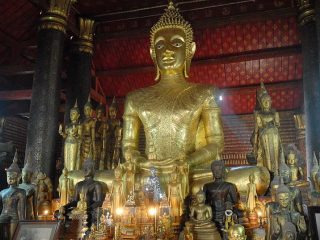The Dujiangyan Irrigation Project, undertaken more than 22 centuries ago still evokes amazement and a sense of wonder. In the environs of the Chinese city of
In the Warring States era in Chinese history the people who resided on the banks of the River Min were adversely affected by the annual flooding of the river. Li Bing, a Qin governor assessed the nature of the problem and discovered that the river expanded due to the rapidly flowing spring water from the nearby mountains; this massive flow of water caused the silty slow moving waterway below to burst its banks.
The simplistic solution would have been to build a dam, but Li Bing was also responsible for maintaining the waterway so that military supply vessels could reach the troops on the frontier; therefore he decided to create a levee so that a section of the river flow would be redirected and discharged through a passage bored through Yulei Mountain. This surplus water would then be diverted to the waterless
The Qin ruler King Zhao granted 100,000 silver taels for the massive project; the workforce for the undertaking is said to have numbered in the tens of thousands. The construction of the levee was performed by using long woven bamboo baskets packed with stones, held in position with wooden tripods.
A major problem that arose was the cutting of the water canal through the hard rock of the mountain, as there was no gunpowder available at the time with which to make explosives. The time-consuming solution was to use fire and water alternatively so that the rocks cracked and could be extricated.
After the completion of the project, the flooding ceased and the area of
Today the area of Dujiangyan has established itself as a major attraction for tourists, and even modern day scientists marvel at the ingenuity o f the irrigation system. Dujiangyan was designated as a UNESCO World Heritage Site in 2000.
Visitors seeking an exclusive




